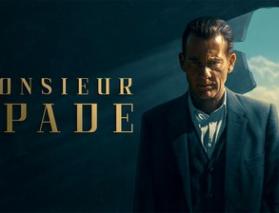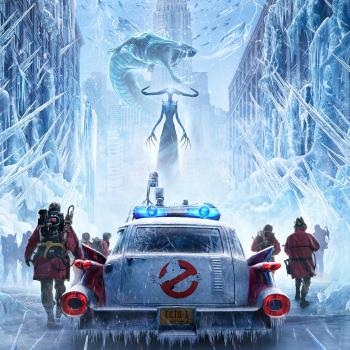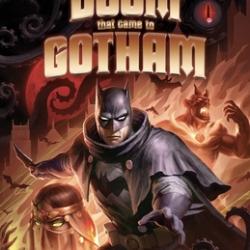 Review of Sleepy Hollow (‘Pilot’), Directed by Len Wiseman
Review of Sleepy Hollow (‘Pilot’), Directed by Len Wiseman
If you’re familiar with the wonderful Washington Irving story, or the equally wonderful Disney cartoon, you probably think of Ichabod Crane as a tall, lean schoolteacher who has a way with the ladies, a sweet tooth a mile long, and a superstitious streak that is ultimately his undoing. Surely we all know that Ichabod was “tall, but exceedingly lank, with narrow shoulders, long arms and legs, hands that dangled a mile out of his sleeves, feet that might have served for shovels, and his whole frame most loosely hung together. ”
Wrong. Oh, so very wrong. Even good ol’ Tim Burton got it wrong when he retold the story in the 90s with Ichabod as a cop from the city. In fact, Ichabod Crane was a professor at Oxford who came over to shoot American colonists for king and country in the 1770s. Fortunately for us, he defected to our side—the right side—because of all that tyranny and stuff. [Spoiler alerts from here on out.] Unfortunately, Ichabod makes the mistake of trying to kill a large axe-wielding Redcoat mounted on a pale horse—first by shooting him and then by beheading him (it “seemed the next logical step”). Ichabod himself is mortally wounded in the process.
Fast forward two hundred and fifty years. Ichabod wakes up in modern Sleepy Hollow, a small town with a population of 144,000. (Because apparently Hollywood doesn’t know what a small town is, and can’t imagine a town the size of the real Sleepy Hollow—about 9,900, if Wikipedia is to be believed.) Why did this happen? Well, as it turns out, the now-headless horseman is actually Death himself, the fourth horseman of the Apocalypse, and when Ichabod’s blood got mixed up with Death’s the two were bound together and Death can’t die, because that would be silly. Because of the blood thing, now Ichabod can’t die either.
But what was Death doing on the battlefield in the first place? You see, the British were not just trying to rein in some rebellious colonists who didn’t like the tax rates, and the colonists were not just upset about over-taxation and under-representation. All that stuff you learned in history class was just a nice story to keep you from losing your mind at the utter horror of reality, or possibly it was a sinister cover-up by the government. In any case, the truth is that the British were trying to bring about the end of the world, and George Washington had to team up with Ichabod Crane to stop them. In the present day, the only thing standing between us and the forces of evil is the Westchester County Sherriff’s Office/Ichabod Crane dream team.
And if you want a better exposition of the plot of Sleepy Hollow, check out Jeff Jensen’s—it’s worth your time.
Look, can I just get this out of the way now and get it over with?
Historical, religious, and literary inaccuracies abound.
Let me say that again: this show is NOT an accurate representation of The Legend of Sleepy Hollow, American history, or Christianity. And that’s fine. When it comes to this sort of thing, I am no purist. This TV show is Supernatural with a Kate and Leopold twist (so my wife tells me, I haven’t seen Kate and Leopold) using characters created by someone with a vague awareness of history, literature, and the Bible and a much-less-vague awareness of National Treasure and Twin Peaks. To give you a couple of examples:
- The witch trials were over by 1700. Which means there were certainly not ‘more than 100 witches executed in Sleepy Hollow between 1712 and 1816’ (a claim made about halfway through the episode).
- Ichabod Crane was a schoolteacher from Connecticut, not a professor from Oxford.
- Death (and the other horsemen of the apocalypse) work for God, not against Him.
Should these inaccuracies ruin the show? By no means! Frankly, Sleepy Hollow has a lot of potential to be fun. So long as they don’t muddy it up with efforts to be “significant” or “meaningful” or some other such nonsense, this will be a perfectly serviceable TV series.
And to be clear on one other thing: at this point I am making no comment as to the quality of the show. This was a pilot, and with a handful of exceptions it’s not really fair to judge a series by its pilot. Instead, I’ll end with a list of themes that it looks like the series might be moving towards which might be of interest to readers of Schaeffer’s Ghost:
- The end of the world
- Popular understandings of the book of Revelation
- The place of America in biblical prophecy
- The relationship between myth, history, and religion
- The difference between good witches and bad witches
- Spiritual evil in the world
- The value of personal experience in interpreting Scripture
- The real world/spiritual world divide
- How many bullets a headless killing machine can take before he becomes too heavy for his horse
Again, I suspect that this will be more of a Buffy the Vampire Slayer-esque treatment of these themes rather than a thoughtful and deep work of art, but for all that it might be worth watching if only to find out exactly how hard George Washington really punched the devil in the face.
Dr. Coyle Neal is Assistant Professor of Political Science at Southwest Baptist University in Bolivar, MO, where he teaches about the thin patriotic line holding back the end of the world.












